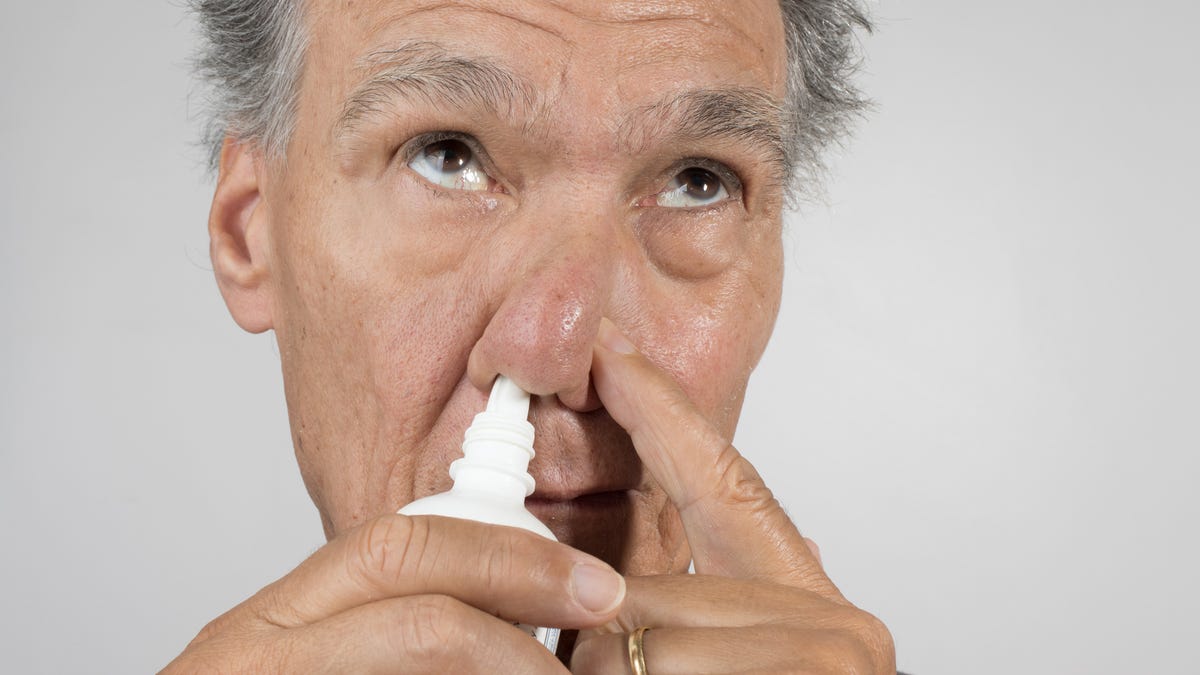
How to organize your medicine cabinet
Store your medicine in a cool, dry and dark place.
Problem Solved
There’s something universally frustrating about waking up with a stuffy nose. After all, congestion can derail your day in countless ways – making it harder to concentrate at work, sleep soundly or even enjoy a simple conversation.
To find relief or avoid such misery, many of us head straight for the medicine cabinet. But amid the search for that bottle of pills or liquid medication, it’s common to wonder if the over-the-counter decongestant we’re seeking will actually make a difference.
Here’s what the science says about what helps, what doesn’t and how else to breathe easier.
What are decongestants?
A decongestant “is a type of medication that helps to clear nasal passages,” explains Dr. Krystal Green, a primary care physician with Inspira Health in New Jersey.
While medicinal plants such as Ephedra have been used to relieve colds in Traditional Chinese Medicine for thousands of years, the first synthetic decongestant wasn’t introduced until 1934. Today, decongestant ingredients appear in a wide range of brand-name products, including Sudafed, Advil, Mucinex, Allegra, Zyrtec, Tylenol, Afrin, Flonase, Vicks and DayQuil.
Although medications like these don’t treat the underlying infection or allergy, some “can reduce swelling of blood vessels inside the nose, opening the airways and making breathing easier,” explains Dr. Jason Nagata, a pediatrician at UCSF Benioff Children’s Hospital in San Francisco. It’s the constriction of those vessels that temporarily decreases inflammation and allows more air to pass through.
Does the decongestant in your medicine cabinet actually work?
But when it comes to effectiveness, it depends on which active ingredient you’re taking.
Evidence shows that pseudoephedrine – found in certain versions of Sudafed, Advil and Mucinex – is the most reliable oral decongestant. Studies demonstrate that it can measurably reduce nasal obstruction and improve airflow, and other research indicates it can meaningfully shorten the congestion phase of a cold.
By contrast, phenylephrine, the ingredient in many “PE”-labeled cold medicines, has come under intense scrutiny in recent years because a growing body of evidence shows that oral phenylephrine performs no better than a placebo for nasal congestion.
In fact, a 2023 advisory panel to the U.S. Food and Drug Administration (FDA) unanimously concluded that current data does not support the effectiveness of oral phenylephrine as a decongestant. In November 2024, the FDA even proposed removing oral phenylephrine from its list of approved over-the-counter ingredients for nasal congestion relief – not because the agency deems it unsafe, but because it says the drug simply doesn’t work as intended.
At the same time, nasal-spray versions of phenylephrine may still provide short-term benefit because they act directly on nasal tissues, bypassing the body’s metabolic barriers. Many nasal sprays also use other active ingredients such as oxymetazoline or xylometazoline, which can further provide temporary relief.
Who are decongestants for?
Moderation is key even with nasal sprays or proven oral decongestant options. “I often advise patients to use decongestants for only three to five days at a time to avoid rebound congestion,” says Green. Rebound congestion, explains Nagata, “is when your nose becomes even more congested after stopping the medication.” Limiting use is also important because some over-the-counter cold medicines and nasal sprays have been shown to be habit-forming.
And decongestants aren’t safe or well-suited for everyone. “They’re not ideal for patients with hypertension because they can raise blood pressure,” notes Green. People with heart disease or diabetes should likewise consult a healthcare provider before using them, adds Nagata. “And it’s also important to note that decongestants aren’t recommended for young children – especially those under 6 – because they can cause side effects and generally don’t work well in that age group,” he explains.
What is the best natural decongestant?
If medications don’t help – or you prefer to skip them – there are several natural ways to breathe easier. “Using a humidifier adds moisture to indoor air,” Green advises, “and saline sprays or neti pots can help flush out mucus and allergens.” Staying hydrated thins mucus naturally, and sleeping with your head slightly elevated encourages drainage.
Nagata adds that gargling with warm salt water, getting plenty of rest and using nasal strips can help open airways or support overall recovery. Managing environmental triggers such as dust, pollen, pet dander, cigarette smoke and strong odors is also important.
For short-term comfort, a warm compress over the sinuses or topical remedies like Vicks VapoRub may soothe symptoms, as its vapors stimulate nasal receptors. Some people also turn to essential oils such as eucalyptus or tea tree oil, or sip herbal teas made with nettle, sage, ginger, or honey and lemon. While these remedies may provide comfort and support recovery, they have not been clinically proven to relieve congestion.
Other palliative measure can be helpful to some. “The steam from a warm shower or even the saltiness of a bowl of chicken noodle soup,” says Green, “can also offer comfort.”
